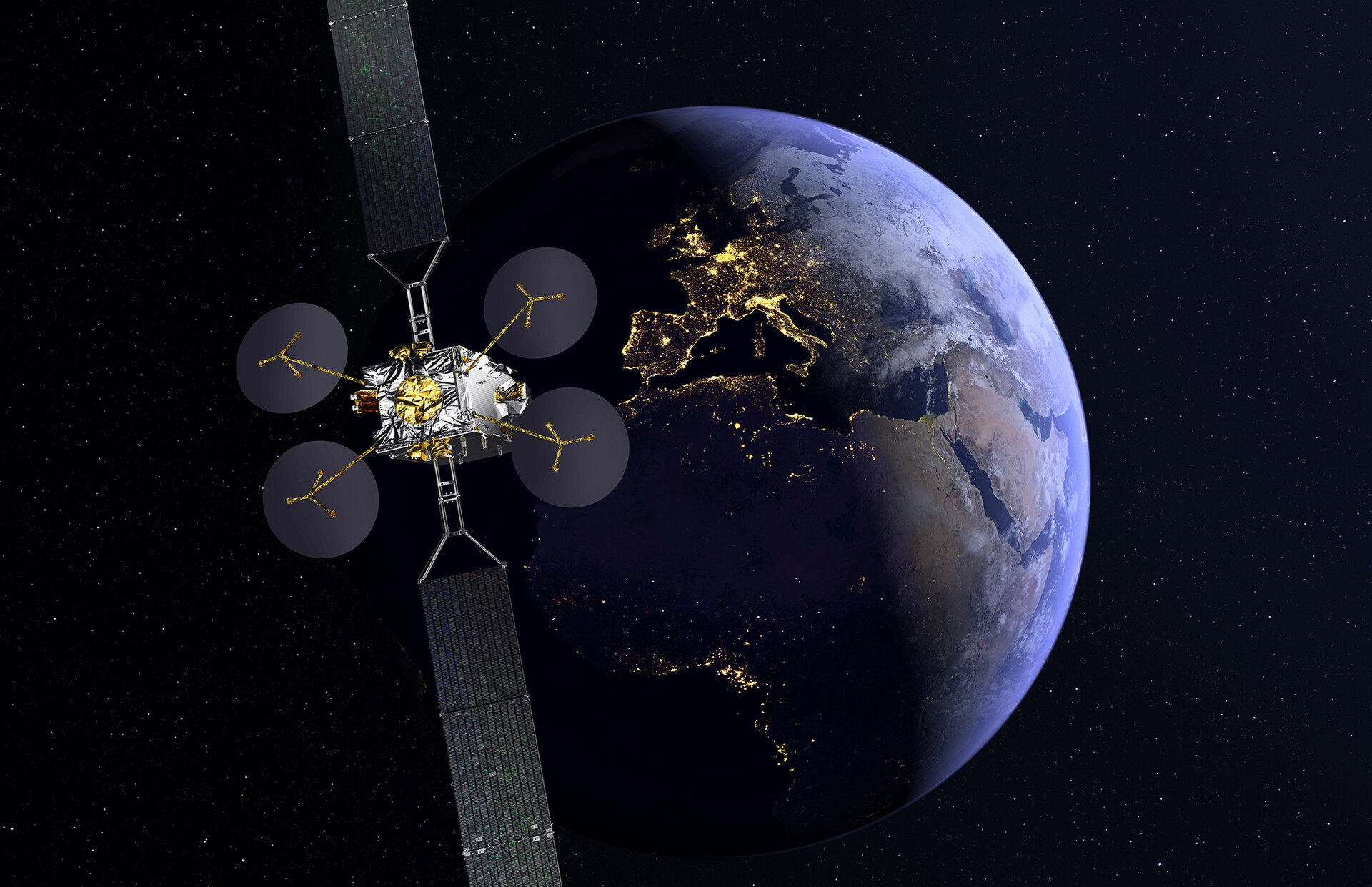Satcom to foster resilient digital systems
Telecommunications are becoming increasingly crucial to our society, economy and security. ESA is supporting the European satellite communication industry’s efforts to identify how to meet future worldwide demands for more secure and resilient digital systems.
Earlier this month ESA initiated two parallel studies to envisage the shape of the future secure telecommunications market and to clarify which solutions and disruptive technologies will be needed.
The results will inform work undertaken between 2021 and 2023 as part of its programme of Advanced Research in Telecommunications Systems. This will enable ESA to help European and Canadian industry to prosper in the highly competitive global market for secure satellite communications.
The telecommunications satellite market is changing. A wave of innovation has created a wide range of new solutions and services, such as very high capacity geostationary satellites, flexible spacecraft for dynamic resources allocation, constellations of nanosatellites providing internet-of-things services and large constellations of broadband satellites operating in low Earth orbit.
These innovations could equip Europe or other regions with a satellite infrastructure able to provide services for safety critical applications.
Air-traffic management, maritime management and civil protection, as well as private markets such as industrial processes monitoring and financial markets all need ubiquitous, secure, autonomous, accessible and resilient communication. Adding a tailor-made, large-scale next-generation satellite communications component to existing global digital infrastructure would make this a reality in Europe and worldwide.
Two consortia – one led by satellite manufacturer Airbus and one led by satellite operator Eutelsat – have won contracts to clarify how to achieve this technically and programmatically in the most effective, cost-efficient and timely way.
They will examine such considerations as: what is the optimal combination of satellite configurations? Should the next generation of satellite infrastructure rely heavily on large high-throughput geostationary satellites and what role could be played by constellations of much smaller satellites in low Earth orbit? Is there a case for a combined use of the two within an integrated, evolutionary system? What are the key underlying technologies to enable the new infrastructure, both for space and ground components? What timescales are involved in their deployment? And what is the right balance of public and private contributions?

The collaborations between ESA and Airbus, on the one hand, and Eutelsat on the other, shall help to quickly identify ways to make the next-generation satellite communication infrastructure available as soon as possible, in line with other projects in other parts of the world.
Elodie Viau, Director of Telecommunications and Integrated Applications at ESA, said: “These two parallel studies will detail the visions of the next-generation, end-to-end satellite communication systems. The studies will help define how best to prepare industry in Europe and Canada for future world competitiveness in the secure satellite market.
“The results may also help support any European initiative to ensure its satellite communication system remains one of the most advanced in the world. We look forward to working with all the relevant European bodies to realise this vision.”
The consortia are due to make their reports by the end of February 2021.















 Germany
Germany
 Austria
Austria
 Belgium
Belgium
 Denmark
Denmark
 Spain
Spain
 Estonia
Estonia
 Finland
Finland
 France
France
 Greece
Greece
 Hungary
Hungary
 Ireland
Ireland
 Italy
Italy
 Luxembourg
Luxembourg
 Norway
Norway
 The Netherlands
The Netherlands
 Poland
Poland
 Portugal
Portugal
 Czechia
Czechia
 Romania
Romania
 United Kingdom
United Kingdom
 Slovenia
Slovenia
 Sweden
Sweden
 Switzerland
Switzerland

























